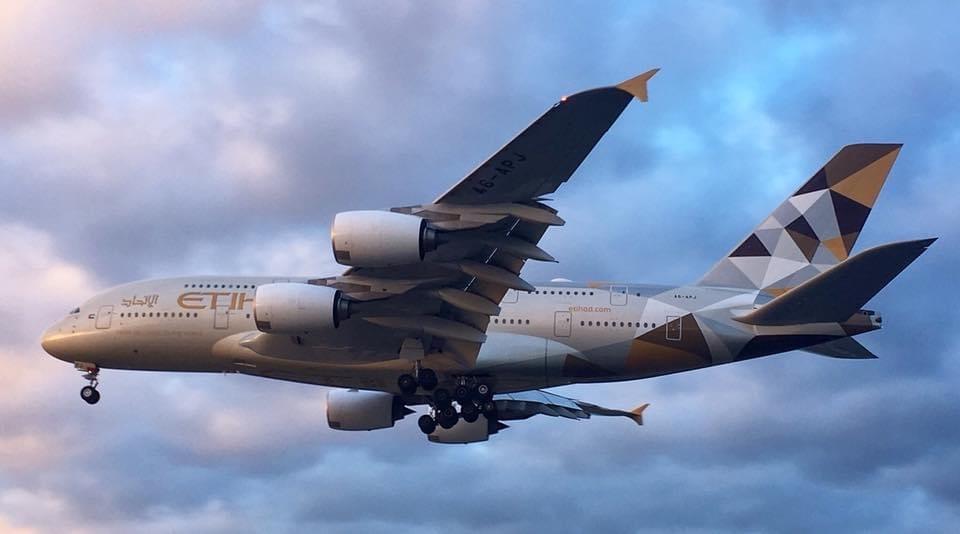A380 is 15 today: will the world’s biggest passenger plane make it to 20?
‘SuperJumbo’ made its first test flight on 27 April 2005

Fifteen years ago, the world’s biggest passenger plane took off for the first time.
The double-deck Airbus A380 took off smoothly, quietly and elegantly on 27 April 2005 for a test flight from the factory in Toulouse.
It was the first journey of an aircraft that was expected to have a glittering career.
Not since Concorde and the Boeing 747 Jumbo jet had an aviation event been so hotly anticipated.
The “SuperJumbo” was supposed to transform flying. It could carry more people, more comfortably than ever before. Even while it was little more than a concept, the aviation industry was enthused with the opportunities it could offer.
Inflight facilities from gyms to jaccuzis were envisaged. While Korean Air introduced a walk-through duty-free shop, most carriers settled for seats, seats and more seats in their specification.
The A380 entered passenger service 30 months after its maiden flight, connecting Singapore and Sydney for the launch carrier, Singapore Airlines.
Dozens of other airlines eagerly awaited deliveries of the aircraft that was supposed to change the travel experience – and extract maximum capacity from a constrained airport system.
It was no surprise that Heathrow soon became one of the leading destinations for the aircraft.
Until March 2020, there were dozens of daily departures and arrivals of the A380 from what was then Europe’s busiest airport. Emirates alone had six take-offs and six landings, extracting maximum capacity from the most sought-after slots in aviation.
Emirates is the only airline that stood between Airbus and abject failure. The Dubai-based carrier is responsible for nearly half the SuperJumbo’s 242 deliveries so far. Before the coronavirus pandemic, Emirates said it would aim to fly at least some of them until 2035.
But there are growing doubts about whether the A380 will make it to the 20th anniversary of its maiden flight, let alone the 30th.
Most passengers love the plane, for its spaciousness and extra comfort. The main (lower) deck is 69cm (2ft 3in) wider than the Boeing 777, Emirates’ other plane type, yet has the same number of seats across: 10.
Some airlines use the rear of the upper deck for economy seating, eight abreast, which is widely regarded as the most civilised “cheap seats” in aviation. And that is all the more important, given the remarkably long routes that the A380 has been deployed upon: for a while, the Qantas link from Dallas-Fort Worth to Sydney was the longest on the planet, and Emirates’ Dubai to Auckland route is one of the most extreme.
The A380 has flown billions of passenger-miles safely, notwithstanding a couple of alarming uncontained engine failures: on Qantas shortly after take-off from Singapore, destination Sydney, in 2010; and on Air France over Greenland en route between Paris and Los Angeles.
The aircraft is an undoubted technological success. But it is fundamentally a 20th-century aircraft that has not achieved the high hopes for transforming air travel in the 21st century.
FlightRadar24, the aircraft-tracking service, could find only one A380 flying anywhere in the world today. There are more than that currently being “parted out”. The A380 has no significant secondhand value: the aircraft used for the historic first commercial flight is currently being dismantled for parts in the foothills of the Pyrenees, at Lourdes in southwest France – not far from its birthplace.
What some saw as a miracle plane – a dream machine – has turned into a nightmare for its owners, whether they are the airlines themselves or leasing companies. In the post-coronavirus world, everyone expects demand for aviation to fall substantially for several years, with business travel particularly hard hit as hard-pressed companies insist executives continue with Zoom or Microsoft Teams meetings rather than flying halfway around the world in the lap of aviation luxury.
Big is no longer beautiful: it is an expensive liability. Filling 500-plus seats (not to mention Etihad’s “The Residence,” comprising double bedroom, en-suite shower and living room) profitably will not be feasible on many routes. Emirates had already deployed the A380 on some implausible links, such as Glasgow to Dubai, cutting fares to fill seats.

The next chapter in aviation will be about keeping a lid on capacity. Suppressing supply means fares will rise, allowing the airlines that are on course to lose a quarter of a trillion pound collectively this year to make a bit of money. And keeping costs down involves modern “big twins” such as the Airbus A350, which will prove far more durable than its larger, older sister.
Is all hope lost? The one possible role I can see for the A380 is that an ambitious (and well-heeled) long-haul, low-cost investor emerges. Given that you can pick up a SuperJumbo for next to nothing, there may be a decade more of life in it for high-density intercontinental flying.
No-one has operated the aircraft close to its maximum certified limit of 853 passengers. If London to Hong Kong becomes a much more economy-focused route, it might just work. But I’ll be on the next Cathay Pacific A350 from Gatwick, thanks, assuming that comes back.
Sadly, the A380 has proved to be an evolutionary cul-de-sac – an expensive, heroic failure, as was Concorde. And, like the supersonic jet, while passengers will miss the SuperJumbo, the world will not.
Join our commenting forum
Join thought-provoking conversations, follow other Independent readers and see their replies
Comments
Bookmark popover
Removed from bookmarks